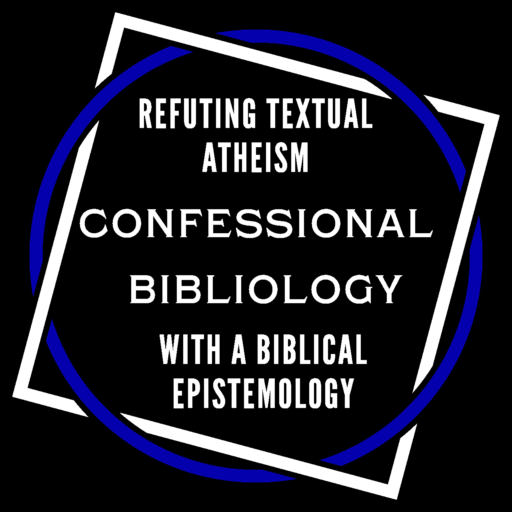This series is a response to Lane Keister’s response to my previous series about his heresy. You can read his response here. It’s a doozy. In 532 words he promotes 12 distinct heresies and demonstrates he doesn’t understand the basic principles of hermeneutics.
The Westminster Confession and Historical Context
The Westminster Confession of Faith (WCF) stands as one of the most profound doctrinal summaries of Reformed theology, embodying the collective wisdom of the Reformers and post-Reformation theologians. Its authority is rooted not only in its fidelity to Scripture but also in the historical and theological context that shaped its content. Lane Keister’s argument that his interpretation of Matthew 5:18 does not violate the Westminster Standards overlooks the integral role of historical consensus in constructing the confession. By dismissing the theological insights of the Reformers as mere “individual opinions,” Keister undermines the very foundation of the WCF and risks distorting its meaning. This article explores the essential connection between the WCF and its historical context, critiques Keister’s presentist approach, and defends the confession’s theological integrity.
1. The Role of the Reformers in Shaping the WCF
Historical and Theological Roots
The Westminster Confession was not crafted in isolation but emerged from a rich tradition of Reformed thought:
- The Reformers’ Contributions:
- John Calvin, Martin Luther, William Perkins, and Theodore Beza laid the groundwork for key doctrines, including the authority, sufficiency, and preservation of Scripture.
- Calvin emphasized the providential preservation of God’s Word as essential to its authority, declaring, “The same Spirit who inspired the apostles must also preserve their writings.”
- Post-Reformation Theologians:
- Figures such as Francis Turretin and John Owen systematized and defended these doctrines, explicitly connecting the preservation of Scripture to God’s covenantal faithfulness.
- Turretin, for example, asserted the necessity of textual preservation for maintaining the infallibility of Scripture.
The WCF as a Culmination of Reformed Thought
- The confession reflects the collective theological understanding of the Reformers and their successors, synthesizing their insights into a coherent doctrinal framework.
- Chapter 1 (Of the Holy Scripture) explicitly affirms that Scripture is inspired, infallible, and sufficient, rooted in the belief that God has preserved His Word intact for all generations.
2. Keister’s Misunderstanding of Historical Context
Keister’s Argument
Lane Keister contends that:
- The Westminster Standards, not the theological opinions of individual Reformers, are the standard of orthodoxy in the Orthodox Presbyterian Church (OPC).
- His interpretation of Matthew 5:18, which excludes manuscript preservation, does not violate the WCF.
Flawed Premises
- Divorcing the Confession from Its Context:
- By relegating the Reformers’ writings to mere opinions, Keister severs the WCF from the historical and theological framework that gave it meaning.
- The confession cannot be properly understood apart from the collective theological consensus of its framers, who consistently linked Matthew 5:18 to the doctrine of textual preservation.
- Presentism in Interpretation:
- Keister’s approach reflects a presentist mindset, applying modern assumptions to interpret the confession in isolation from its historical roots.
- This method risks anachronism, distorting the intent of the confession’s authors and introducing doctrinal instability.
3. Presentism and the Misinterpretation of the WCF
What is Presentism?
Presentism refers to the anachronistic application of contemporary values and assumptions to interpret historical documents or events. In the case of the WCF:
- Presentism disregards the historical and theological context in which the confession was written.
- It prioritizes modern individual interpretation over the collective wisdom of the past.
Keister’s Presentist Approach
- Rejection of Historical Consensus:
- Keister dismisses the interpretations of Matthew 5:18 by past Reformed theologians, arguing that these are non-binding opinions.
- This dismissal ignores the fact that the confession was shaped by these very interpretations, which were not isolated opinions but part of a broader theological consensus.
- Consequences for the WCF:
- By rejecting the historical application of Matthew 5:18 to textual preservation, Keister disconnects his interpretation from the confession’s theological foundation.
- This introduces subjectivity, allowing for reinterpretations that deviate from the confession’s original intent.
4. The Importance of Historical Consensus
The WCF as a Product of Theological Collaboration
- The confession is the result of decades of theological refinement, reflecting the collective understanding of Scripture by the Reformed tradition.
- Historical writings provide the interpretive framework necessary for understanding the confession’s doctrinal assertions.
Key Doctrines Shaped by Historical Theology
- Preservation of Scripture:
- The framers of the confession affirmed that God’s Word is preserved in its original purity, as evidenced by their reliance on texts like Matthew 5:18, Psalm 12:6-7, and Isaiah 59:21.
- This belief was central to their understanding of Scripture’s infallibility and sufficiency.
- Authority of Scripture:
- The confession’s emphasis on the authority of Scripture is rooted in the belief that the text, as divinely preserved, is the final arbiter in matters of faith and practice.
Why Historical Consensus Matters
- Guarding Against Subjectivity:
- The historical consensus of the Reformers provides a safeguard against individualistic interpretations that deviate from orthodoxy.
- Preserving Doctrinal Integrity:
- The confession’s meaning is inseparable from the theological context in which it was written. Ignoring this context risks doctrinal fragmentation and misrepresentation.
5. Response to Keister’s Approach
Keister’s Misstep
- By rejecting the historical application of Matthew 5:18 to textual preservation, Keister undermines the confession’s coherence and theological depth.
- His claim that the WCF does not mandate adherence to specific interpretations of individual passages ignores the confession’s dependence on the broader theological framework of the Reformers.
The Necessity of Historical Context
- Interpreting the WCF Faithfully:
- To understand the confession’s intent, one must engage with the writings of the Reformers and post-Reformation theologians who shaped its content.
- Defending Confessional Integrity:
- Keister’s approach introduces interpretive subjectivity, which risks eroding the confession’s authority and unity.
Conclusion
The Westminster Confession of Faith cannot be divorced from its historical and theological roots. Lane Keister’s dismissal of the Reformers’ interpretations of Matthew 5:18 as irrelevant opinions reflects a fundamental misunderstanding of the confession’s construction and intent. By severing the confession from its historical context, Keister’s approach undermines its theological integrity and opens the door to doctrinal instability.
The WCF is a product of the collective wisdom of the Reformed tradition, built on the foundation of Scripture as the divinely preserved and infallible Word of God. To reinterpret it apart from this foundation is to misrepresent its meaning and compromise its authority. The church must remain vigilant in upholding the confession’s historical context to preserve its unity and fidelity to Scripture. In the next article, we will examine the broader implications of such reinterpretations for the church’s doctrinal stability and mission.
Lane Keister’s Theology and Its Inconsistencies
Lane Keister claims to affirm the doctrine of textual preservation, asserting that the original texts of both the Old and New Testaments have been preserved through the manuscripts. However, his interpretation of Matthew 5:18 as referring only to conceptual preservation undermines this claim and introduces a significant theological inconsistency. By rejecting the textual application of a verse that explicitly mentions the smallest elements of the Hebrew text—”jots and tittles”—Keister’s conceptual approach can logically be extended to all texts dealing with preservation, eroding confidence in Scripture’s infallibility. Compounding this issue is the response of Keister’s presbytery and the Orthodox Presbyterian Church (OPC), which defended Aimee Byrd’s adulterous theology while silencing and destroying the ministries of faithful elders who exposed her error. This article will demonstrate the logical flaws in Keister’s theology, the dangers of his conceptual framework, and the broader implications for the church.
1. The Inconsistency in Keister’s Claim
Keister’s Affirmation of Textual Preservation
Keister claims to believe in the preservation of Scripture, stating that God has preserved the original text of both Testaments through manuscripts. Yet he simultaneously argues that Matthew 5:18 does not support manuscript preservation but rather the enduring presence of the law in a conceptual sense.
Matthew 5:18 and the Jot and Tittle
Matthew 5:18 declares:
“For verily I say unto you, Till heaven and earth pass, one jot or one tittle shall in no wise pass from the law, till all be fulfilled.”
- Literal Reference to Textual Elements:
- The “jot” refers to the smallest letter of the Hebrew alphabet, and the “tittle” denotes a tiny stroke or marking that distinguishes one Hebrew letter from another.
- These terms underscore the precision of the text, emphasizing that not even the smallest details of the written Word will pass away.
- Keister’s Conceptual View:
- By reinterpreting Matthew 5:18 as referring only to the enduring presence of the law’s concepts or principles, Keister severs the connection between the verse and the preservation of the Hebrew text.
- This view directly contradicts the verse’s explicit reference to textual elements, creating a theological inconsistency between his professed belief in textual preservation and his conceptual interpretation of this foundational passage.
Logical Implications of Keister’s View
Keister’s conceptual approach to Matthew 5:18 sets a precedent that can be applied to all biblical texts dealing with preservation:
- Broad Reinterpretation:
- If Matthew 5:18 refers only to the preservation of general concepts, then verses like Psalm 12:6-7, Isaiah 40:8, and Matthew 24:35 could also be reinterpreted to mean that God preserves ideas rather than the exact words of Scripture.
- This reinterpretation undermines the textual integrity of Scripture, opening the door to theological relativism.
- Lack of Logical Defense:
- Keister offers no logical argument to prevent his conceptual view from being applied to other preservation texts. His framework lacks the consistency necessary to uphold the doctrine of textual preservation.
2. The Dangers of Conceptual Preservation
Erosion of Infallibility
The doctrine of infallibility depends on the preservation of the exact words of Scripture, not just its concepts:
- Concepts are inherently abstract and subject to human interpretation, making them vulnerable to distortion.
- Without textual preservation, the precision of doctrinal truths is compromised, leading to uncertainty about the content of God’s revelation.
Undermining Scriptural Authority
- Relativism in Interpretation:
- A conceptual approach allows for the reinterpretation of Scripture based on contemporary cultural or theological trends, weakening its authority as the final arbiter of truth.
- Loss of Confidence:
- If the exact words of Scripture are not preserved, believers are left to question whether the Bible they hold is truly the Word of God or merely a human approximation of divine concepts.
3. The Broader Implications for the OPC
The OPC’s Defense of Aimee Byrd
Keister’s theology is emblematic of broader issues within the OPC, which has demonstrated a willingness to defend individuals promoting theological compromise while silencing faithful voices:
- Aimee Byrd’s Promotion of Adultery:
- Byrd, a prominent figure within the OPC, has openly espoused views that promote adultery under the guise of egalitarian theology. Her writings, which blur biblical boundaries on marriage, have been rightly condemned by faithful elders as undermining God’s moral law.
- The OPC’s Response:
- Rather than addressing Byrd’s theological errors, the OPC defended her, labeling her critics as divisive and targeting faithful elders who sought to expose her views.
Silencing Faithful Elders
- Destruction of Ministries:
- The OPC has gone to great lengths to marginalize and discredit elders who have sounded the alarm about Byrd’s promotion of adultery, effectively destroying their ministries.
- This response reflects a broader trend of prioritizing institutional reputation over doctrinal fidelity.
- A Failure of Church Discipline:
- By protecting Byrd and punishing her critics, the OPC has failed in its duty to uphold the purity of the church and defend the authority of Scripture.
4. Refutation of Keister’s Mischaracterization of Criticism
Accusations of Libel
Keister accuses critics of personal attacks and libel, framing their theological critique as hostility toward himself and his presbytery.
Theological, Not Personal
- Focus on Doctrine:
- The critique of Keister’s theology is not a personal attack but a response to the logical and theological consequences of his views, particularly his conceptual interpretation of Matthew 5:18.
- Deflection of Accountability:
- By framing the critique as libel, Keister deflects attention from the substantive issues raised about his theology, avoiding engagement with the implications of his arguments.
Conclusion
Lane Keister’s claim to affirm textual preservation is fundamentally undermined by his conceptual interpretation of Matthew 5:18. The verse’s explicit reference to the smallest elements of the Hebrew text—jots and tittles—clearly supports textual preservation, making Keister’s conceptual view inconsistent with both the text itself and the broader doctrine of preservation. Moreover, his framework invites the reinterpretation of all preservation texts, eroding confidence in Scripture’s infallibility and authority.
The broader implications of Keister’s theology are reflected in the actions of his presbytery and the OPC, which defended Aimee Byrd’s promotion of adultery while silencing faithful elders who sought to uphold biblical truth. This failure of doctrinal and moral integrity highlights the urgent need for the church to return to a robust defense of Scripture’s textual preservation and a commitment to biblical discipline.
In the next article, we will examine how these theological and institutional compromises affect the church’s witness in a world increasingly hostile to the authority of God’s Word. The church must stand firm on the foundation of Scripture, recognizing that every jot and tittle matters in the preservation of God’s truth for all generations.





